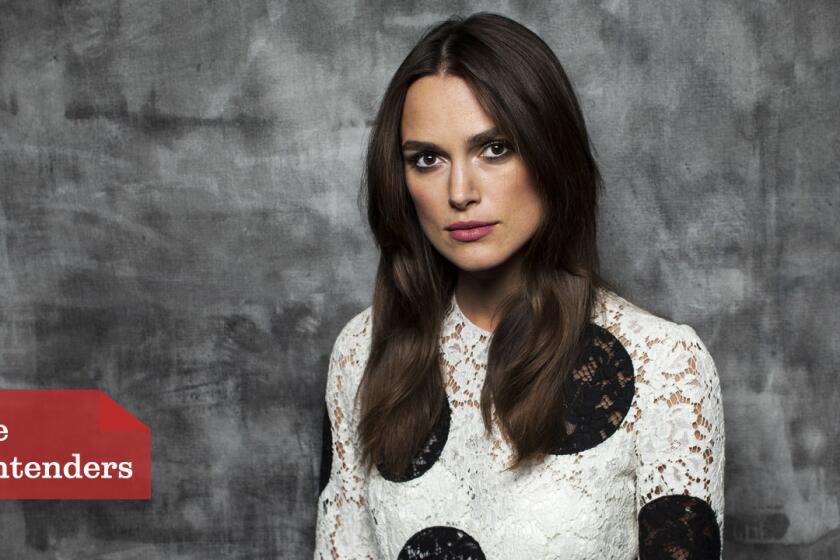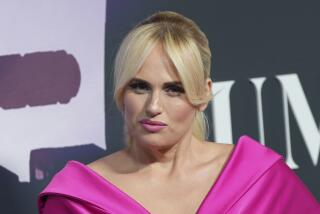No more nude scenes, says Keira Knightley — unless the filmmaker is female
- Share via
Shortly after becoming a mother a few years ago, actress Keira Knightley started using a body double to take her place in nude scenes. She’s through with them, she says. But she’s willing to make an exception for another Hollywood rarity: films directed by women.
In conversation with director Lulu Wang and journalist Diane Solway for the “Chanel Connects” podcast, which aired Jan. 13, Knightley, who adds a no-nudity clause to her contracts, said she’d bend her own rule for the sake of representation — and the subject matter.
“If I was making a story that ... was about the journey of motherhood and that journey of body accept[ance], I’m sorry, but it would have to be with a female filmmaker,” said Knightley. “I don’t have an absolute ban. But I kind of do with men.
“It’s partly vanity,” she added, noting that the birth of her two daughters transformed her body in ways she never imagined. But it’s also about power.
Knightley, who came of age in front of the camera in films such as “Love Actually” and “Pride & Prejudice,” recalled that when she was younger, she simply did as she was told. Now that she’s 35, with a trail of blockbusters behind her, she’s more vocal.
She’s also in the position to be more selective about the characters she portrays, making it a point to choose multidimensional, working women like Sally Alexander, a single mother in “Misbehaviour,” a 2020 comedy-drama about protests against the 1970 Miss World competition in London.
The #MeToo movement, said Knightley, also drew attention to the lack of women behind the camera. This is significant, she noted, not only because of how it affects the portrayal of women and girls onscreen but because it can impact the actors’ well-being. Amid other revelations surrounding disgraced film producer Harvey Weinstein, for instance, actress Salma Hayek shared that she was pressured into doing a nude scene when working with him on “Frida.”
Keira Knightley has been in the Hollywood spotlight for years, but arguably 2014 was the year when she was not just seen but really heard.
“He had been constantly asking for more skin, for more sex,” wrote Hayek, in an opinion piece for the New York Times in 2017. At one point, he threatened to abandon the film, unless Hayek “agreed to do a sex scene with another woman. And he demanded full-frontal nudity.”
“As the actor, you don’t have the power,” said Knightley on the “Chanel Connects” podcast. “If you’re lucky, you’re working with collaborative people who want to have the discussion, and that’s why they’ve brought you into the piece. But, ultimately, the buck doesn’t stop with you. It’s the director, then, really, the producers, the executive producers, who really have the final say.”
Despite modest gains, women remain nowhere near parity in key behind-the-scenes roles, according to San Diego State University’s annual “Boxed In” report.
Female directors, however, do not abound in Hollywood. The Center for the Study of Women in Television and Film at San Diego State University found that women represented 16% of directors working on the 100 highest-grossing films in 2020 — up from 12% in 2019 and 4% in 2018.
Knightley is aware of this. “I think, on average, it’s 14 years between the first film and the second film for female directors — which is insane,” she said.
But she’ll take her chances.
“I’d just rather not stand in front of a group of men, naked.”
More to Read
The biggest entertainment stories
Get our big stories about Hollywood, film, television, music, arts, culture and more right in your inbox as soon as they publish.
You may occasionally receive promotional content from the Los Angeles Times.












